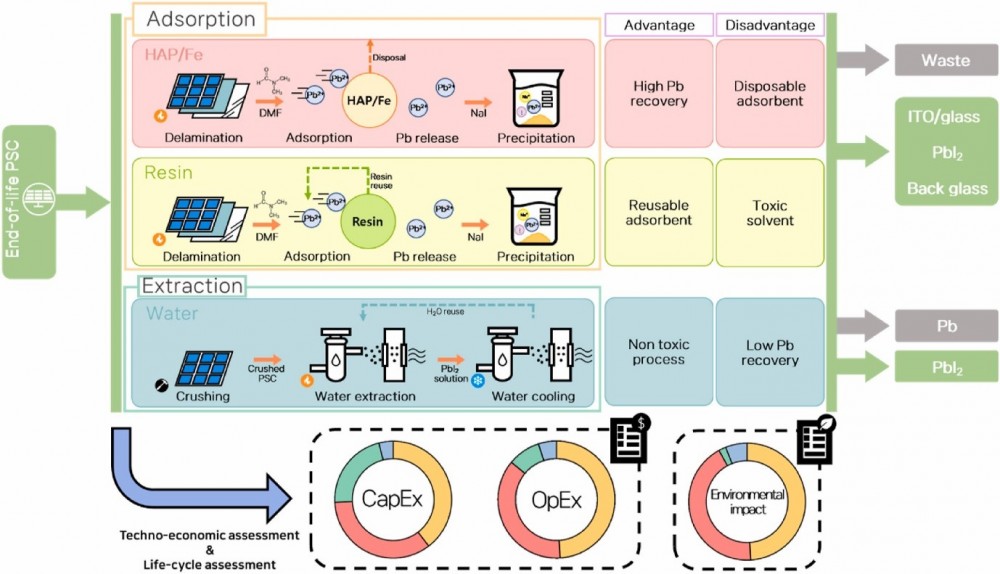
연구
Research Outcome
미래를 창조하는 포스텍 화학공학과
Economic and Environmental Feasibility Evaluation Study of Hydrometallurgical Recycling Methods for Perovskite Solar Cells
- Title of paper
- Economic and Environmental Feasibility Evaluation Study of Hydrometallurgical Recycling Methods for Perovskite Solar Cells
- Author
- [한지훈 교수 연구실] 페로브스카이트 태양전지의 습식 제련 방식 활용 재활용 방식에 대한 경제성과 환경성 평가
- Publication in journal
- Journal of Cleaner Production
- Publication date
- 20250115
[Abstract]
This study evaluates the economic and environmental feasibility of three processes to recycle perovskite solar cells (PSCs) that contain lead ions: two adsorption methods, one with HAF/Fe adsorbent (Case 1) and one with WAC-resin (Case 2) adsorbent, and one extraction method that uses water (Case 3). Techno-economic assessment (TEA) indicates that Case 2 is more economically feasible (−2.54 US$ m−2 PSCs) than Case 1 (447.07 US$ m−2 PSCs) and Case 3 (2.48 US$ m−2 PSCs). A life cycle assessment (LCA) was also conducted for four impact categories, global-warming potential (GWP), terrestrial ecotoxicity (TETP), freshwater ecotoxicity (FETP), and human toxicity (HTP). These analyses indicate that Case 3 is less environmentally damaging (−0.04 kg CO2-Eq, 12,91 kg 1,4-DCB-Eq, −14.55 kg 1,4-DCB-Eq, and 3.50 kg 1,4-DCB-Eq, respectively) than Case 1 and Case 2. Sensitivity analysis of TEA and LCA reveals that the solvent reusability (0–30 times) is the dominant economic and environmental indicator for all PSCs recycling processes, especially Case 1 (447.07–11.30 US$ m−2 PSCs, 3.83–0.55 kg CO2-Eq, 2.75–2.73 kg 1,4-DCB-Eq, 0.26–0.22 kg 1,4-DCB-Eq, 90.12–22.00 kg 1,4-DCB-Eq, respectively). Transportation distance of discarded PSCs, adsorbent price, and adsorbent reusability were also found to be major process variables affecting economic and environmental performance. This study provides future guidelines for the development of more economical and environmentally-benign hydrometallurgical processes to recycle PSCs.
DOI: https://doi.org/10.1016/j.jclepro.2025.144651
link: https://www.sciencedirect.com/science/article/pii/S0959652625000010




